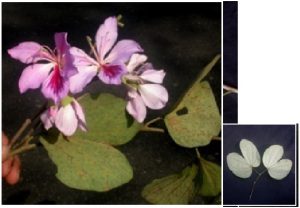We value your privacy
We use cookies to enhance your browsing experience, serve personalized ads or content, and analyze our traffic. By clicking "Accept All", you consent to our use of cookies.
We use cookies to help you navigate efficiently and perform certain functions. You will find detailed information about all cookies under each consent category below.
The cookies that are categorized as "Necessary" are stored on your browser as they are essential for enabling the basic functionalities of the site. ...
Necessary cookies are required to enable the basic features of this site, such as providing secure log-in or adjusting your consent preferences. These cookies do not store any personally identifiable data.
No cookies to display.
Functional cookies help perform certain functionalities like sharing the content of the website on social media platforms, collecting feedback, and other third-party features.
No cookies to display.
Analytical cookies are used to understand how visitors interact with the website. These cookies help provide information on metrics such as the number of visitors, bounce rate, traffic source, etc.
No cookies to display.
Performance cookies are used to understand and analyze the key performance indexes of the website which helps in delivering a better user experience for the visitors.
No cookies to display.
Advertisement cookies are used to provide visitors with customized advertisements based on the pages you visited previously and to analyze the effectiveness of the ad campaigns.
No cookies to display.
|
Division
|
Angiosperms |
|
Class
|
Dicotledons |
|
Subclass
|
Polypetalae |
|
Series |
Calyciflorae |
|
Order |
Rosales |
|
Family |
Caesalpiniaceae |
|
Genus |
Bauhinia |
|
Species |
variegata |

|
Botanical name:
|
Bauhinia variegata Linn. |
|
Local/Trade names: |
Variegated Bauhinia, Kachnar |
|
Conservation status:
|
Commonly found wild. Cultivated in gardens. |
|
Digonestic features: |
Leaves bilobed broader than long; flowering time March-April. |
|
Description: |
Medium – sized deciduous tree. Bark dark brown, nearly smooth. Leaves 10-15 cm long, broader than long with a medium cleft reaching 1/4 – 1/3 the way, 11-15-nerved. Flowers purple-white, pink or purple, 5-7 cm across, fragrant. Pods 15-25 cm long, flat, priminently veined when dry. Seeds 10-15. |
|
Phenology:
|
Fls. & Frts.: March-May, new leaves after fruiting. |
|
Distribution:
|
Sub-Himalayan tracts, also in dry forests over eastern, central and south India and Myanmar. |
|
Where to see it: |
Medicinal Plant Garden. |
|
Uses: |
Source of fodder. Roots carminative; decoction prevents obesity. Bark tonic and anthelmintic, used in scrofula and cutaneous troubles; also used for ulcers and leprosy. Bark as well as flowers used as pot-herbs; flower buds pickled. Leaves and pods eaten as a vegetable. Dried buds used for diarrhoea and dysentery and piles. Flowers laxative. Seeds yield a fatty oil. Bark yields fibre, also used for dyeing and tanning. Leaves used for bidi manufacture. Wood used for agricultural implements. |
Chief Conservator of Forests & Chief Wildlife Warden is the Head of the Department. There is one post of Conservator of Forests & two posts of Deputy Conservator of Forests viz.